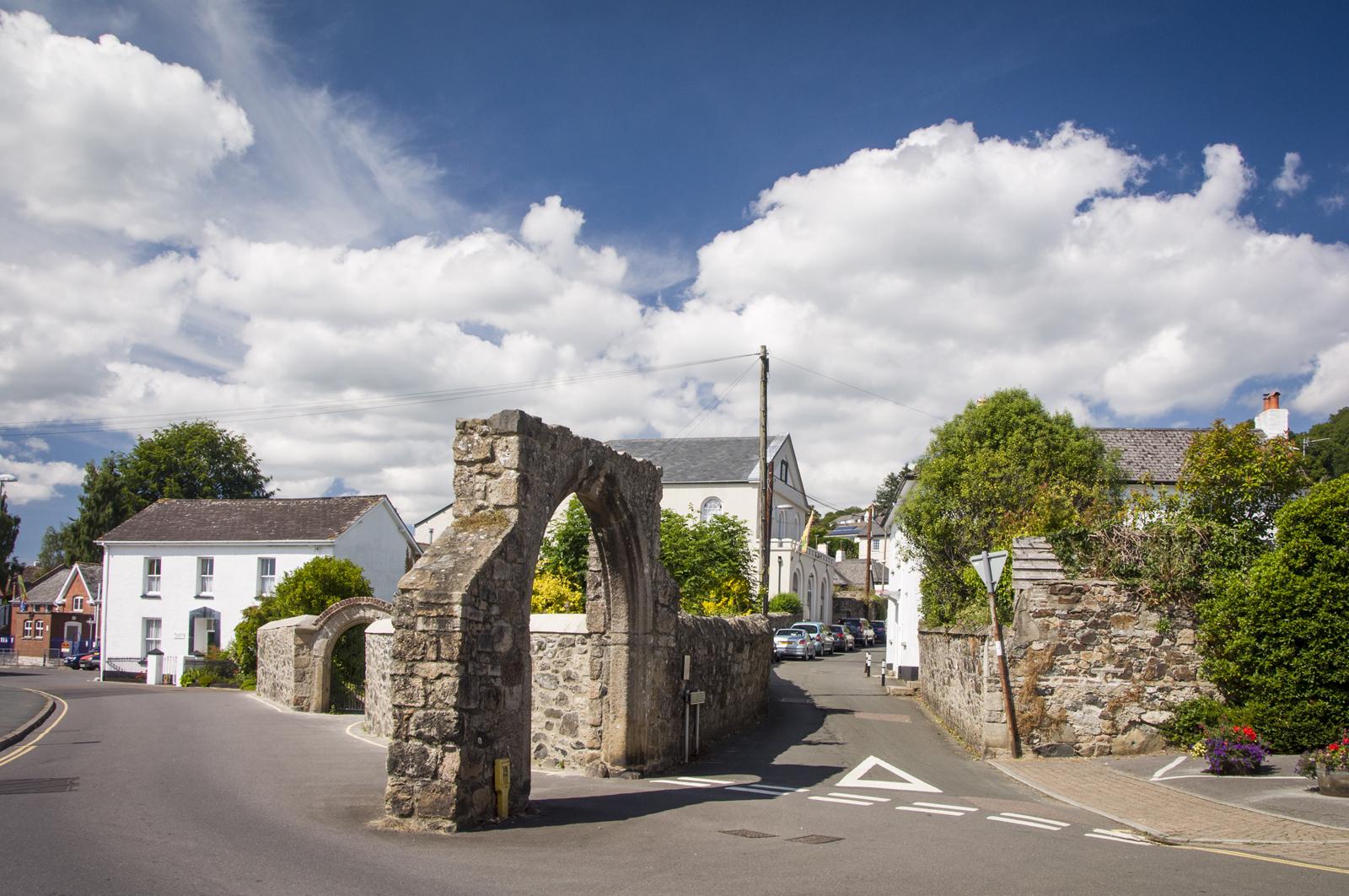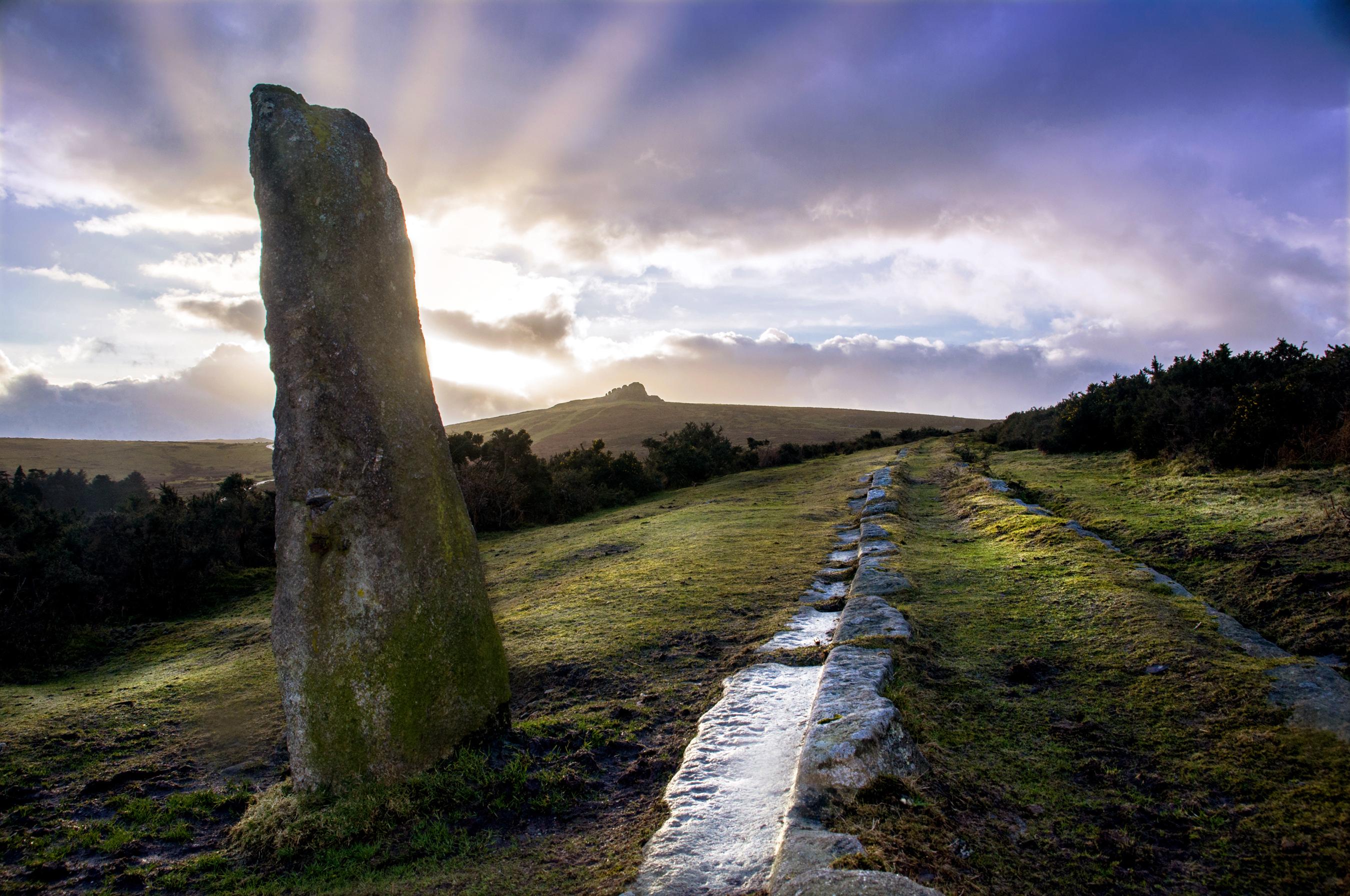
Bovey Tracey has a long and colourful history and takes its name from the river Bovi or Boui, which passes through the town and is now known as the River Bovey. A relative of the De Tracey family (who settled in the area after 1066) is said to have been the Lord of the Manor. One of them, Sir William, who had a share in the murder of Thomas a Becket in Canterbury Cathedral in 1170, is said to have built the Parish church of St Peter, St Paul & St Thomas of Canterbury (which was dedicated to St Thomas) as a penance for his crime. The unbroken list of vicars dates from 1258. The present church, with its fine coloured rood screen and carved stone pulpit, dates mainly from the later 14th and 15th centuries.
De Tracey later added his name to that of Bovey, thus renaming the town Bovey Tracey. We do not know if there ever was a manor house in Bovey Tracey as the medieval manor was mainly held by the Crown. The Manor House in East Street (now known) was previously called Pitt Tenement. In 1260 a Fair and Market Charter was granted by Henry III and there is still a Farmers Market on alternate Saturdays.
The restored Riverside Mill building in the centre of Bovey Tracey is home to MAKE South West. The building was never used as a mill but was built in 1850 as a stable. The waterwheel simply collected water from the river for use in the stables and Bridge House, which is now residential flats and the Co-operative Conveniencestore. The old Market Cross, close to the Town Hall, has been restored as a War Memorial. This was the original site of the village green and the Town Hall was opened here in 1866. Courtenay House was the original site of Bovey Grammar School. It later became a Mission House and was used for parish relief work.
The Devon House of Mercy, for reclaiming fallen women, was established here in 1861, and was formally opened in a temporary residence in 1863 at nearby Chapple Farm. The foundation stone of the present building was laid by the Earl of Devon in 1865 and contained accommodation for 72 inmates being supported by voluntary contributions. The members of the Clew Sisterhood had the management of it. Following the Second World War, Devon House was converted into residential accommodation.
At nearby Parke is the headquarters of the Dartmoor National Park Authority. This large house and estate was left to the National Trust in 1974 and the house is leased to the Dartmoor National Park Authority.
Cromwell's Arch

An archway, known locally as Cromwell's Arch, lies a little off the main street. This is all that remains of a monastery which once stood on the site until it was demolished in 1822. It now serves as a reminder of Bovey Traceys connection with the Civil War. In January 1646, the Town was the headquarters of Lord Wentworth. Cromwell's troops are said to have surprised Royalist officers who were playing cards in Fronthouse Lodge in East Street.
The Royalists threw coins out of the windows, leaving the poorly paid Roundheads to fight over the money while they escaped by the back door. The Battle of Bovey Heath was fought the following day with Cromwells army winning 400 horses and capturing seven regimental colours. A section of Bovey Heath is a Scheduled Ancient Monument Site and important artifacts from the battle have been found there over the years. Bovey Heathfield is now a haven for rare plants and wildlife, owned and managed by Devon Wildlife Trust.
Pottery

As the area is at the edge of the Bovey Basin, famous for its production of valuable clays, the towns pottery industry was established in the 1750s. Josiah Wedgwood visited the Indio Pottery on 31st May 1775 to see the competition for himself and noted:
I went to Bovey Tracey to see a potwork It is a poor trifling concern, and conducted in a wretched slovenly manner We can carry their clay and flints from Devonshire to Staffordshire, there manufacture them into ware, and send it back to their own doors better and cheaper than they can make it!
Nonetheless, research by Adams & Thomas in their book A Potwork in Devonshire, published in 1996 by Sayce Publishing, suggests that far from being a poor trifling concern, these potteries played a significant role in the foundation and development of English industrial pottery.
Yet as ball clay and lignite, a sort of coal, were readily available close to the Town so the industry expanded swiftly. At the height of their success, Bovey Tracey Potteries provided jobs for about 250 people. By the middle of the 20th century, the industry was in decline and closed in the 1950s. Today the bottle kilns and examples of local pottery can be seen at the museum located at the House of Marbles, to the south of the town, where there is also a glass blowing centre and the largest collection of marbles in the world. Other potteries produced different types of products within the area. These included the Candy Art Pottery, Wemyss Ware and Plichta. Wemyss Ware is still manufactured locally. Fuller information on these potteries can be found in Ian Turners publication 'Candy Art Pottery' published by Hillian Press and Brian Adams's book 'Bovey Tracey Potteries - Guide and Marks' published by the House of Marbles.
The Templer Way

In 1820 George Templer built an eight mile tramway to connect the granite quarries at Haytor and the Stover Canal at Teigngrace to transport granite down to the River Teign and the coast. The Templer Way Trail follows much of the original route of the tramway from the moor to the sea. A leaflet giving full information on the Templer Way is available free from the Bovey Tracey Information Centre.
The railway linking Newton Abbot to Bovey Tracey and on to Moretonhampstead was built in 1866 and closed in 1959, when the last scheduled passenger train ran through the station on 2nd March 1959. The Grade II listed Railway Station building, in St Johns Lane, is now home to the Bovey Tracey Heritage Trust.